CLYDESDALES - WHAT MAGNIFICENT BEASTS!
Animals feature largely in the Alloway Railway Tunnel Mural. There are foxes, cats, dogs, chickens, pheasants, hedgehogs, seagulls, badgers, ducks, frogs, mice, sheep, cows, fish and many more. But pride of place must go to the magnificent painting of the two big Clydesdale horses in the middle of the Tunnel. Chris Rutterford, our Tunnel muralist, has totally captured the spirit of these two majestic beasts!
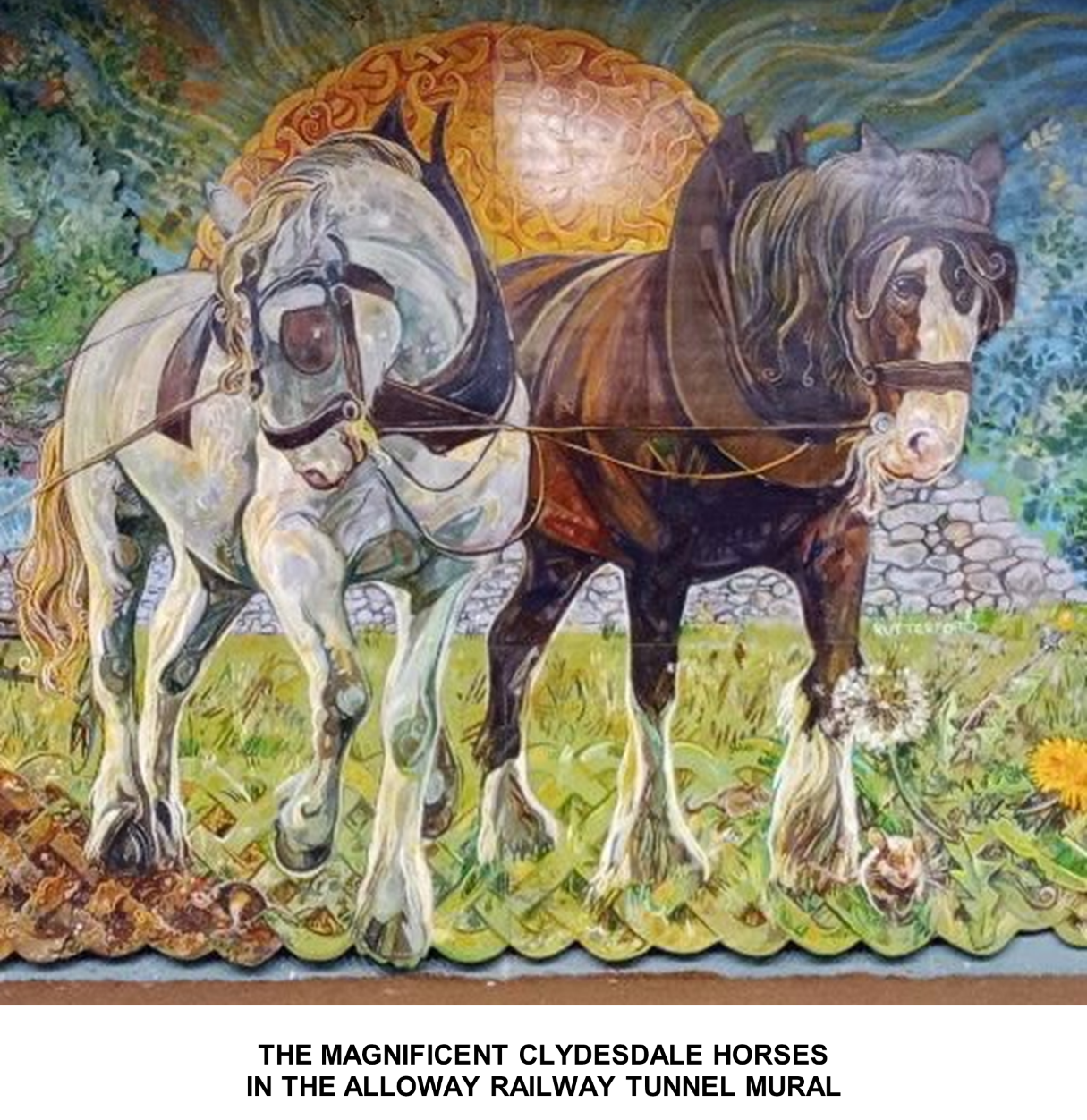
Horses, and Clydesdales in particular, have been important in the history of Ayrshire farming since the early nineteenth century. These large and powerful horses were traditionally used for their strength in both farming and road haulage and hence are closely tied to the agricultural and industrial development of south west Scotland.
If you scan the QR CODE - Of Mice and Men - beside the Clydesdales in the Tunnel, you can see a short film of Clydesdales Geordie and Jackson taking part in the Scottish Ploughing Championships 2024, which were hosted by Monktonhill Farm in Ayrshire.
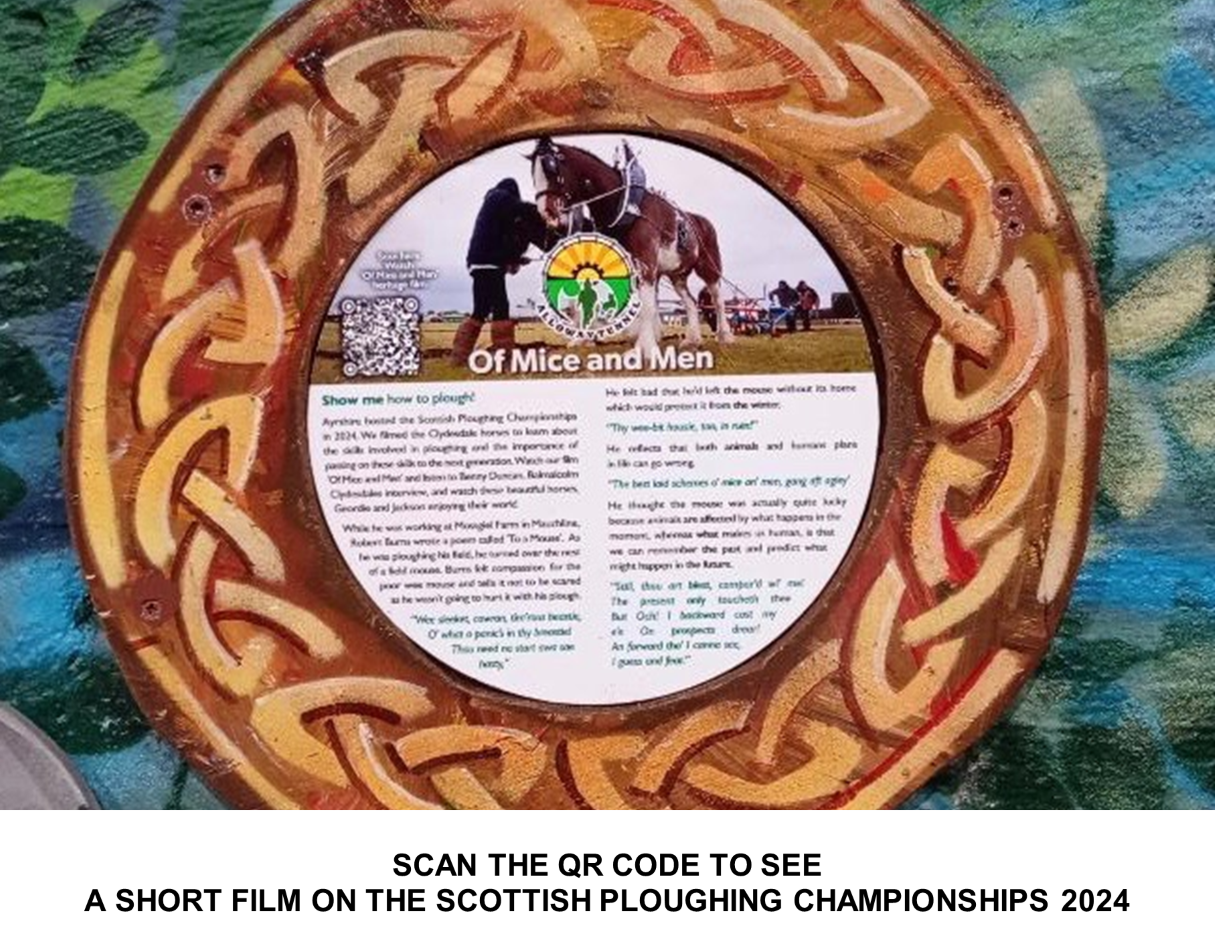
Clydesdales were once plentiful throughout Scotland. However, in the early twentieth century their numbers began to fall significantly. Many were conscripted for use in the First World War and at the same time agriculture was becoming increasingly mechanised with cars and machines taking over many of the heavy duty tasks of everyday life.
Once numbering around 140,000 worldwide, by 2010 the Clydesdale horse population was estimated to be only5,000. Scotland still boasts a population of Clydesdales. There are a number of farms where visitors can learn about the lives of these gentle giants and experience them at first hand. And, of course, they are a feature of the annual Ayr County Show held at Ayr Racecourse in May and the annual Royal Highland Show held in Edinburgh in June.
The Blackstone Clydesdales are often seen enjoying the sea and sand on Ayr beach. These horses are based at Blackstone Farm near New Cumnock,where the Duncan family have bred and cared for Clydesdales since the 1930s.
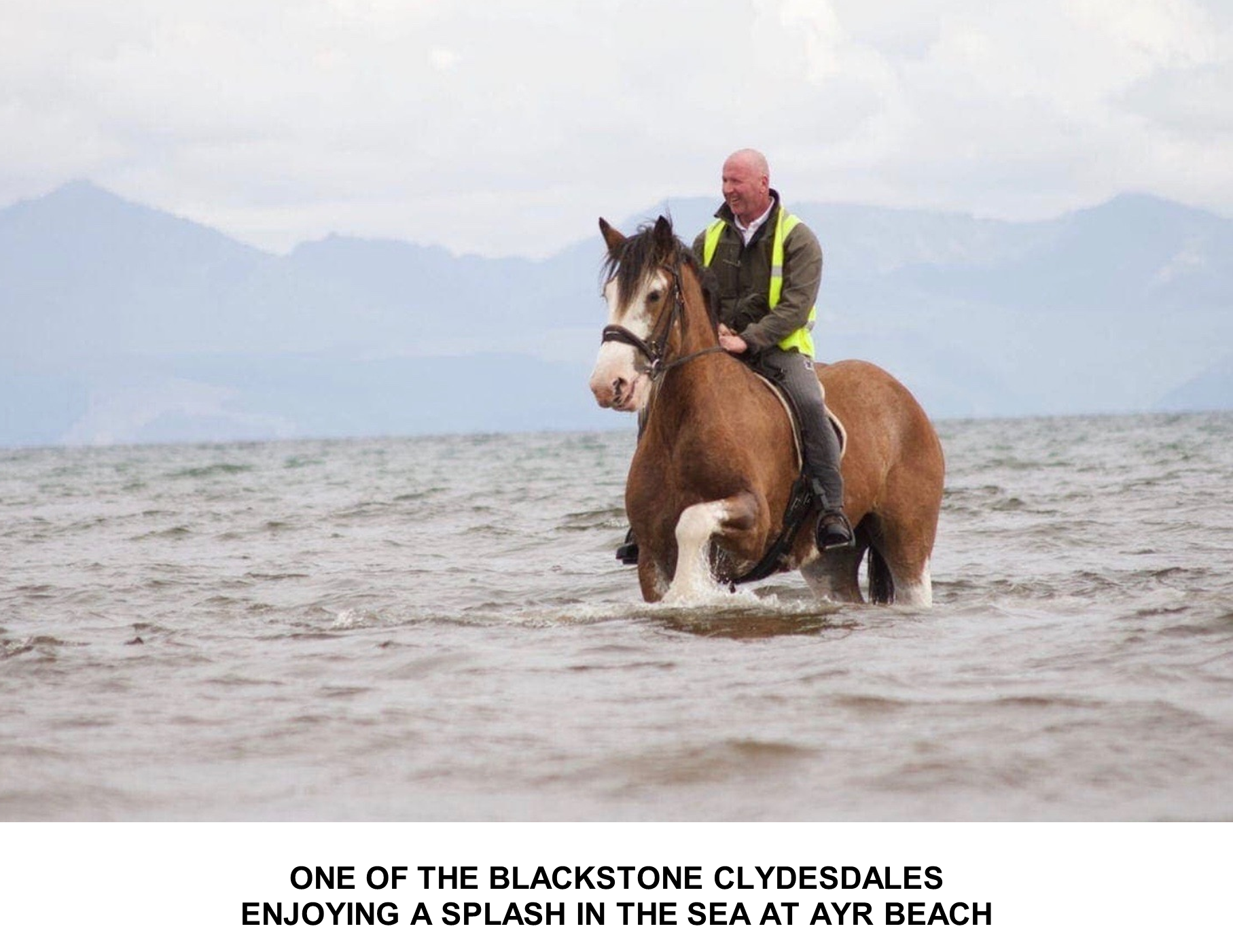
Magi Duncan remembers her Gran, Jessie Kerr, telling her the following tale about the theft of a Clydesdale from her great great great grandfather,John Kerr of Knockburnie, near New Cumnock in Ayrshire.
A TALE …
This is the tale of the last horse theft hanging in Scotland. The thief was George Watson and he stole a grey Cydesdale mare from farmer John Kerr. Kerr had a reputation for kindness to travellers and had given Watson shelter for the night, together with the group of tinkers accompanying him on his travels. Kerr, was angered when he discovered that his horse was missing the following morning.
Kerr chased the group of travellers, first to Kilmarnock and then he followed their trail through Fenwick, Mearns, Glasgow, past Loch Lomond and up to Tarbert. The horse which was stolen had a broken shoe, so it left a unique track which he was able to follow.
He next went to Inveraray and obtained a warrant from the Sheriff and enlisted the assistance of two constables to accompany him. People on the road remembered the group of travellers with a grey mare so Kerr was able to follow them through Dalmally and Glencoe, finally catching up with them in a remote glen near Appin.
Watson was apprehended by the two constables and taken to Inveraray Jail and from there he was sent to Ayr for trial. A guilty verdict was returned at Ayr Court and in 1811 Watson was sentenced to hang.
The grey Clydesdale mare returned home with her rightful owner, and was reportedly renamed Tinker!
But the tale does not end there …
In May 2011, John Nelson, John Kerr’s great great great grandson recreated his ancestor’s epic journey. Changes to the land and roads meant that it was no longer safe to take a Clydesdale horse through Glasgow, so the journey began at Balloch. Thereafter Nelson followed the original route as far as possible, all the way through Glencoe and finally to Appin. Nelson published a book entitled “On the Trail of a Broken Shoe”, telling the story of Kerr’s chase and his own modern-day journey.
The law was changed shortly after Watson’s sentence was carried out. The crime of horse stealing no longer carried a death sentence, so George Watson became the last man to be hanged in Scotland for stealing a horse.
WHAT IS A CUDDIE?
The Scots word “cuddie” is an affectionate, informal name for a horse, especially a working farm horse. The term cuddie doesn’t exclusively refer to Clydesdales, but undoubtedly Clydesdales are cuddies!
There are many old Scots children’s rhymes about cuddies. “Gee up ma’ cuddie” is the first line of many traditional Scottish folk verses which are part of the oral tradition passed down through the generations. These rhymes were often made up, changed and adapted over time, so different versions are found indifferent regions and among different communities. I recall my husband bouncing our grandchildren on his knee, much to their delight, while he sang
“Gee up ma cuddie
Ma cuddie’s ower the dyke
If you muddle ma cuddie
Ma cuddie’ll gie ye a bite”
The word cuddie appears in the Scots version of “The Boy, the Mole, the Fox and the Horse”, the modern allegorical tale written by Charlie Mackesy. The Scots version is called “The Laddie, the Mowdie, the Tod and the Cuddie!”
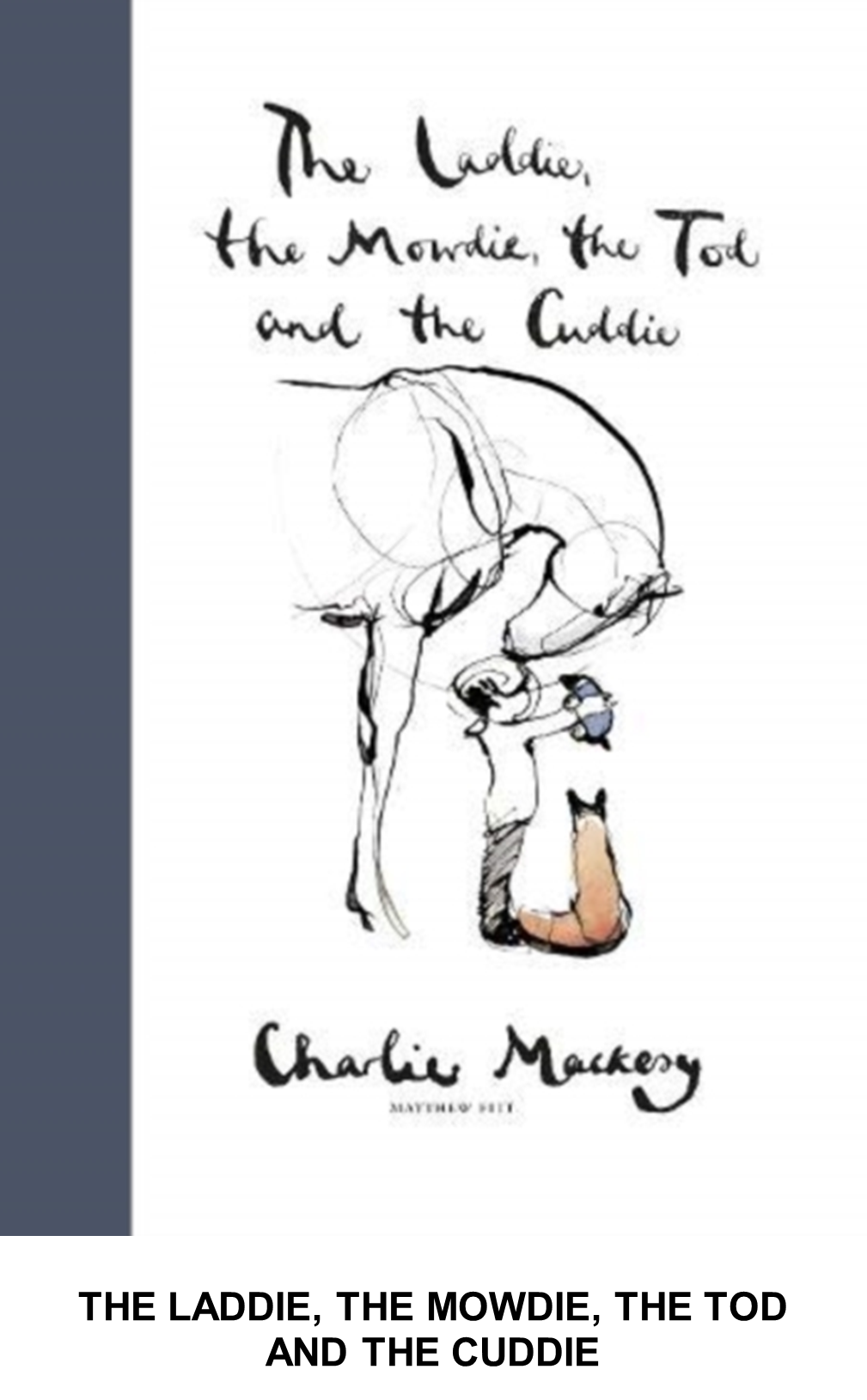
THE CUDDIES LANE MURAL
In July 2025, our Alloway Tunnel muralist, Chris, launched the Cuddies Lane Mural at Colinton in Edinburgh. This mural portrays a vibrant historical scene evoking Colinton village life around 1900. The mural focusses on people and horses throughout its length. As Chris says “I really wanted to bring back the history and put a real emphasis on horses, which is what a cuddie is”.
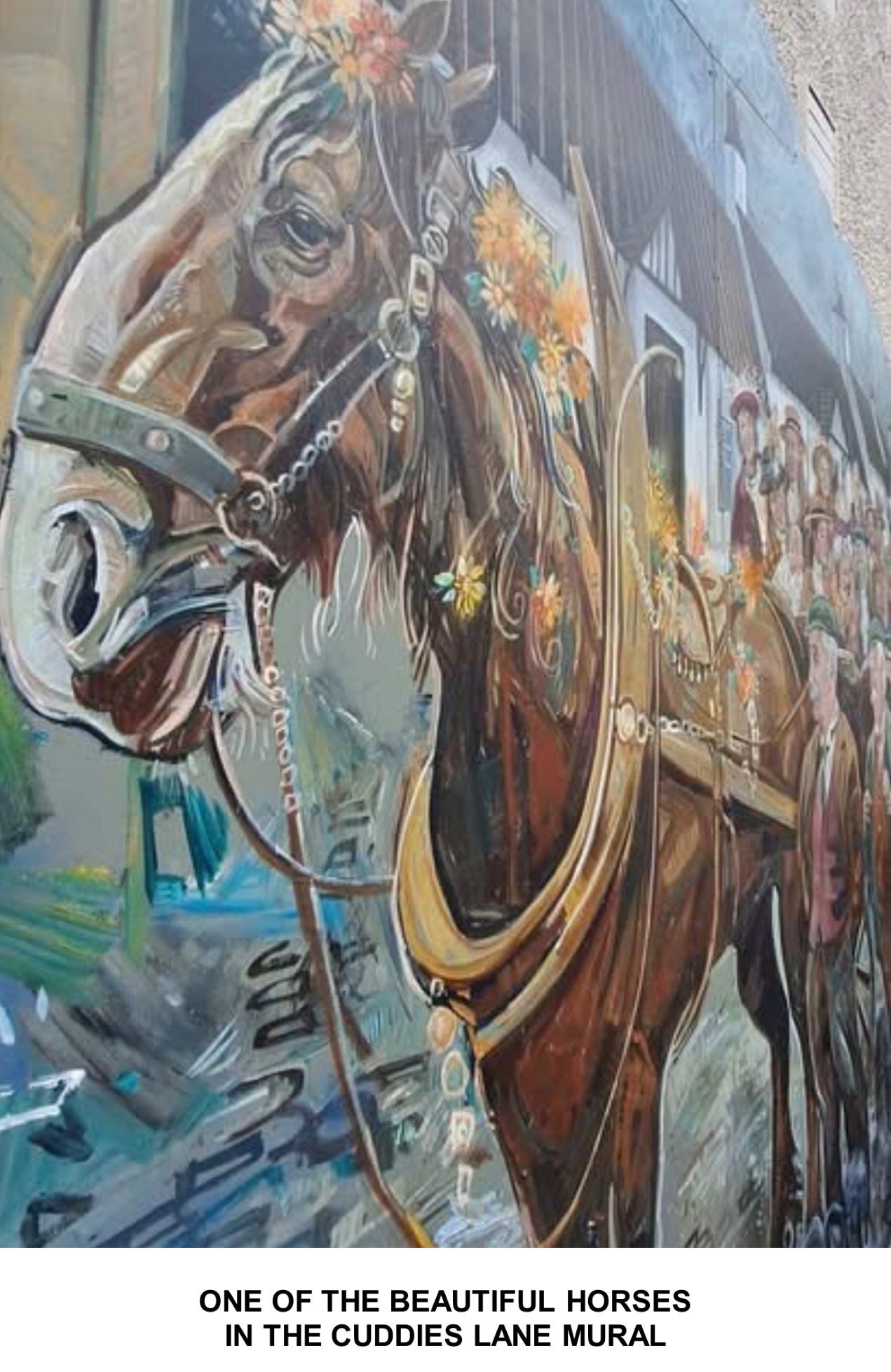
The Cuddie’s Lane mural is adjacent to the Colinton Tunnel mural, both of which have been painted by Chris - they’re well worth a visit.
The Alloway Railway Tunnel mural is the result of a chance encounter between Ron Ireland and Chris in the Colinton Tunnel. Ron is Chair of the Alloway Railway Tunnel Project. He has played a pivotal role in ensuring that we have a lasting resource which embraces heritage story-telling and vibrant public art.
The ART Project is nearing its final stages, so make sure you keep an eye on progress and see how many more cuddies are painted into our mural!
Hazel Sommerville